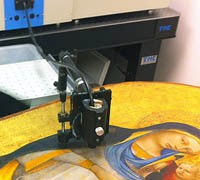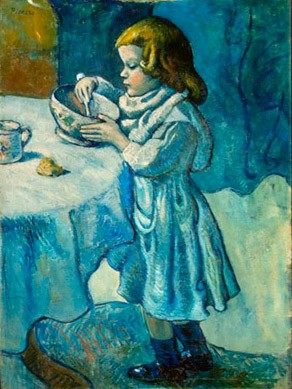Picasso, like many other artists, is known to have recycled his painted canvases as well as make large "evolutionary" changes to his paintings. Conservation and imaging scientists at the Gallery have been working to improve the visualization of these paint changes by applying newly developed optical imaging methods. Working with researchers and specialized infrared cameras from the United States Army Night Vision and Electronic Sensors Directorate, they have been able to obtain a clear image of the portrait beneath Picasso's Blue period painting Le Gourmet (1901, 1963.10.52). This hidden portrait of a woman is executed in a style used by Picasso prior to his Blue period as indicated by the bold dabs of paint seen in the woman's mantilla.
Science: Analytical Imaging
Picasso's Le Gourmet
Picasso, like many other artists, is known to have recycled his painted canvases as well as make large "evolutionary" changes to his paintings. Conservation and imaging scientists at the Gallery have been working to improve the visualization of these paint changes by applying newly developed optical imaging methods. Working with researchers and specialized infrared cameras from the United States Army Night Vision and Electronic Sensors Directorate, they have been able to obtain a clear image of the portrait beneath Picasso's Blue period painting Le Gourmet (1901, 1963.10.52). This hidden portrait of a woman is executed in a style used by Picasso prior to his Blue period as indicated by the bold dabs of paint seen in the woman's mantilla.
Conservation Division
National Gallery of Art
2000B South Club Drive
Landover, MD 20785
[email protected]

